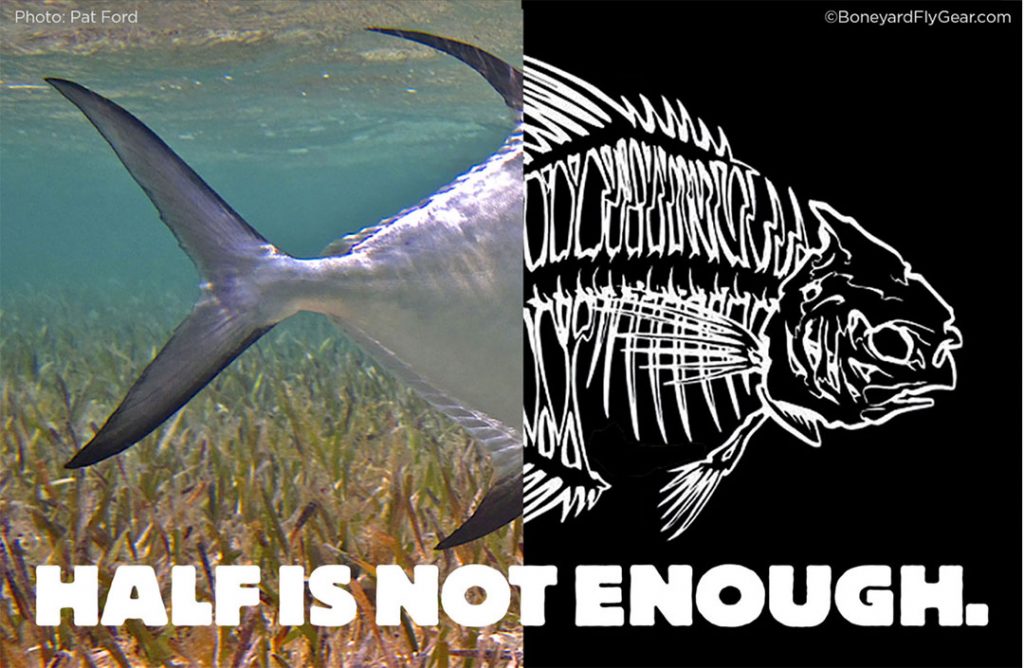
Voice your support for a four-month closure at Western Dry Rocks. The future of the Keys permit fishery depends on it.
After lengthy consideration of a temporary four-month fishing closure at Western Dry Rocks, the Florida Fish and Wildlife Conservation Commission recently agreed to test a two-month closure instead. Less than half of what the ecosystem requires. The four-month closure, guided by science and supported by a broad coalition of major fishing and conservation organizations, already was a compromise between full closure of the site and doing nothing at all to improve fishery management. Now cut in half again, a two-month closure will fail to protect spawning permit and other species at the site.Your voice matters. The two-month closure was approved as a draft rule, subject to public comment and a final vote by FWC Commissioners. Please join us at the FWC virtual meeting this Thursday, January 14, at 6 p.m. EST to express your support for a four-month fishing closure.
We also urge you to submit your comments online at:
MyFWC.com/SaltwaterComments. Even if you submitted a comment last spring, it is important that you do so again as part of this public comment period.
Instructions on how to join this Thursday’s virtual FWC meeting will be posted online at: MyFWC.com/Marine.
Click on “Rulemaking: Submit a Comment/Attend a Workshop” and “Upcoming Public Workshops.” If you cannot attend this meeting, FWC is hosting another virtual meeting on January 21 at 2 p.m. EST.
Why does BTT support a four-month closure?
- When spawning aggregations are protected, the predictable outcomes are more abundant fish populations with a greater abundance of larger fish in the surrounding area.
- When anglers fish spawning aggregations, the largest trophy fish are the most vulnerable because they stay at the aggregation sites the longest. And for permit, the largest fish are also harder to land, making them more likely to be eaten by sharks. Fishing spawning aggregations takes away the trophy fish from our fishery. If left alone at their aggregations, those trophy permit would return to their home areas and be available to target year-round throughout the Lower Keys.
- BTT tracked the spawning migrations of over 150 permit over the last five years, and identified several spawning sites for permit. Of those spawning sites, Western Dry Rocks is the most important. 71% of the permit that were tagged on the flats in the Lower Keys went to Western Dry Rocks to spawn. BTT tagged 13 fish at Western Dry Rocks—10 of those fish returned to the flats in the Lower Keys.
- Though harvest for permit is prohibited in the Keys during the spawning season, predation on hooked permit at Western Dry Rocks is unsustainable. BTT and our collaborators conducted two studies to determine how many permit are eaten by sharks at Western Dry Rocks and at other places. In both studies, 35% – 39% of permit hooked at Western Dry Rocks were eaten by sharks prior to being landed.
- Protecting spawning fish for only two months has proven not to work. The Gulf of Mexico Fisheries Council enacted a May-June spawning season closure at Riley’s Hump (a spawning site similar to Western Dry Rocks in the Dry Tortugas) in 1992 to protect spawning mutton snapper. Following the closure, fishing effort continued for mutton snapper in April and July on spawning fish. Because of the high volume of spawning fish harvested in April and July, the fishery did not improve as expected. However, when Riley’s Hump was granted a full year closure in in 2001, within three years, mutton snapper aggregations began to show signs of recovery, and in 10-15 years, the fishery in the surrounding area improved.



